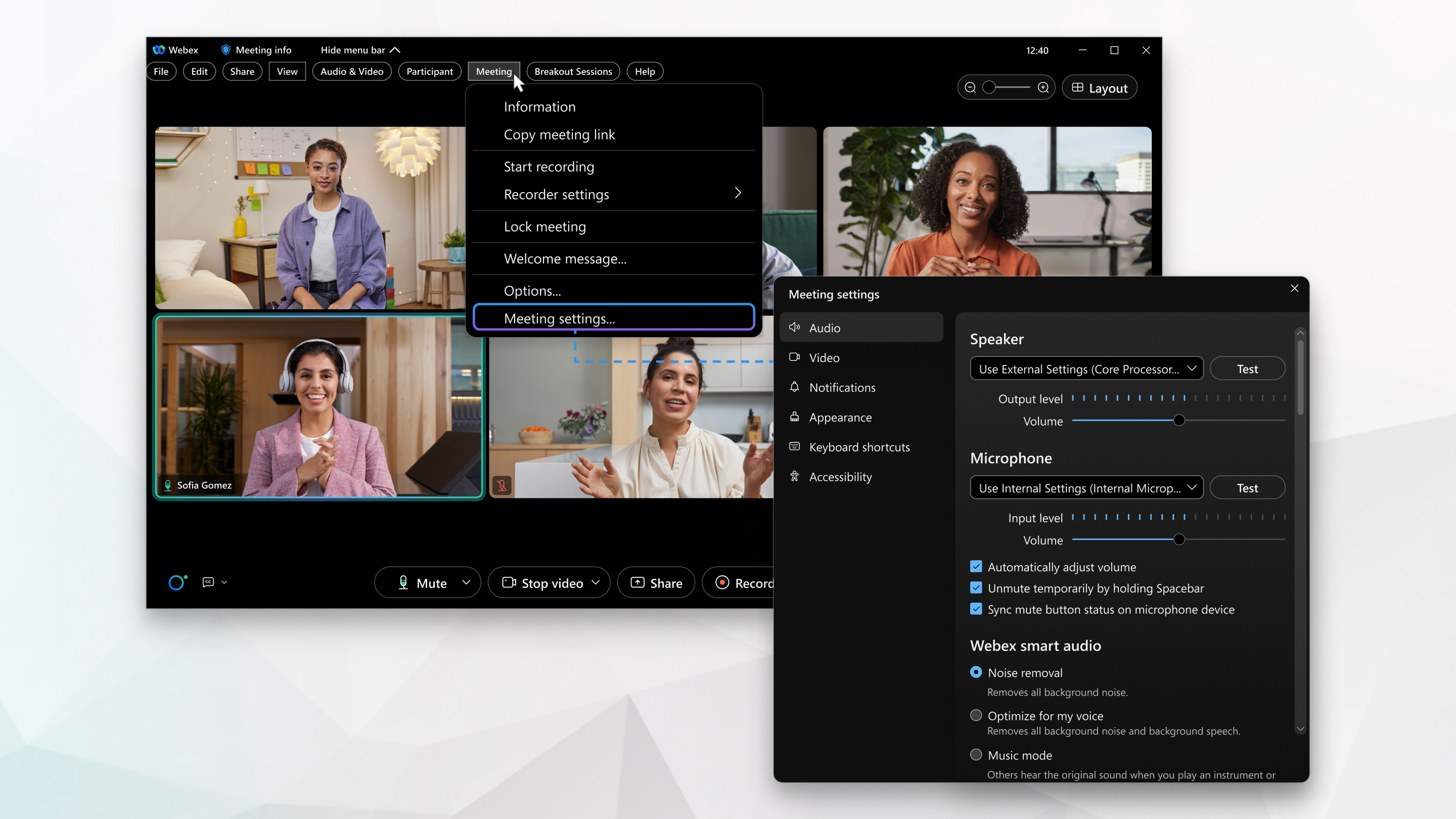Select audio settings for Webex Meetings and Webex Webinars
 Feedback?
Feedback?

| 1 |
For a meeting, click | ||||||||||||
| 2 |
For a webinar, click | ||||||||||||
| 3 |
For audio settings, click Audio, and then check the checkbox next to the setting you want. Some checkboxes are checked by default and can't be changed.
| ||||||||||||
| 4 |
For audio statistics, click Statistics, and then click Audio.
The Overall tab displays memory utilization and CPU usage. |
| 1 |
Click Webex Meetings. | ||||||||||||
| 2 |
From the drop-down menu, click Meeting settings. | ||||||||||||
| 3 |
Click Audio and then check the checkbox next to the setting you want. Some checkboxes are checked by default and can't be adjusted.
| ||||||||||||
| 4 |
For audio statistics, click Statistics, and then click Audio.
The Overall tab displays memory utilization and CPU usage. |


